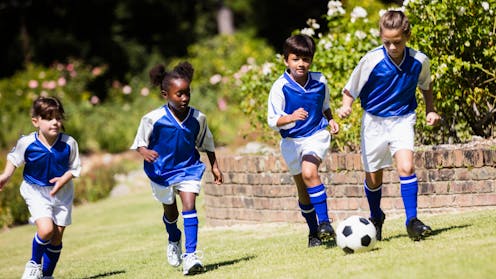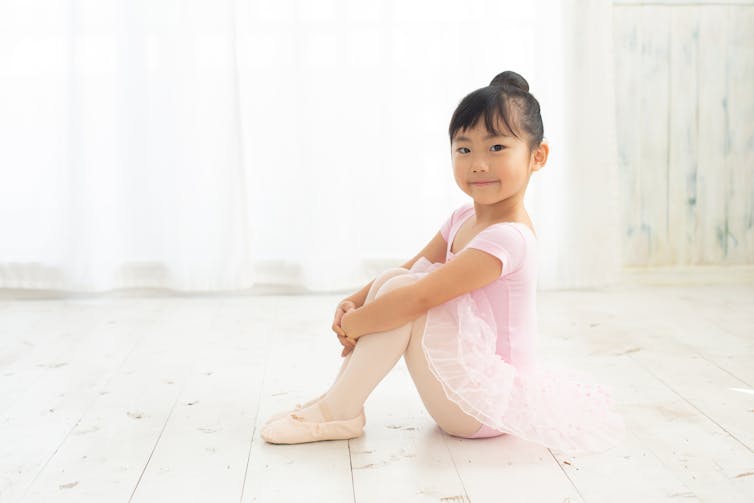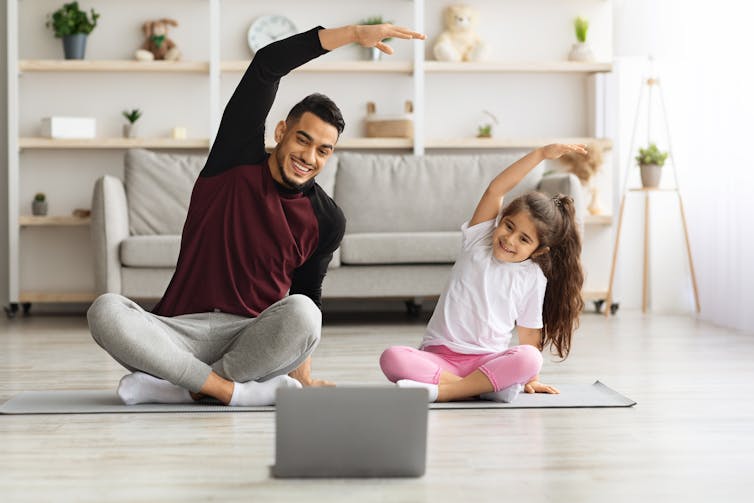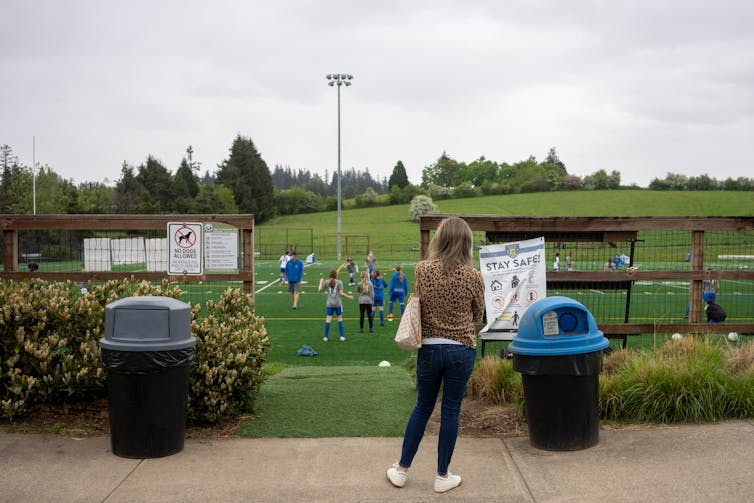
Organized play and sporting opportunities for children have finally started to resume after having just passed the two-year mark of the pandemic.
As parents know too well, the pandemic led to extended closures of settings that previously supported children’s play and sport, like parks, community centres and sport facilities.
Our team of researchers in the Child Health and Physical Activity Lab at Western University wanted to understand COVID-19’s impact on children’s activity levels. Via social media and sports organizations, we recruited Ontario parents and their children (under 12 years), to hear their perspectives in interviews.
We also wanted to know parents’ plans for returning their children to physical activities or sport when COVID-19 cases were still present in the community, or if they were planning to wait until after the pandemic had ended.
We conducted interviews in December 2020 and January 2021 to learn more. Eleven parents who participated were from urban communities across Ontario and one was from a rural community. Seven lived in a semi-detached or detached home, two lived in an apartment or condominium and two respondents did not relay detail about their living quarters. All nine children who participated lived in urban areas.
Children and adults missed socializing
Getting active by engaging in play and sport is important for children’s healthy development. Playing in the neighbourhood, or attending an organized activity such as soccer or dance, can enhance children’s social skills, cognitive development and promote a better night’s sleep.
As we heard in our study, children and adults also rely on play and organized physical activities to connect with friends and community. Children we spoke with noted that they really missed seeing their friends and sport coaches when public health measures restricted their participation in physical activities.
Parents also missed the social interaction that came with attending their children’s extracurricular activities. One parent said:
“Well, I guess when you’re at the dance studio five nights a week and then all of a sudden you’re not there anymore … it’s like for her, it was more like the loss of activity. For me, it was I feel it was my that was my social time.”

Financial, weather, space barriers
New financial barriers arose during the pandemic, such as the cost of financing new toys for children to play with while at home for extended periods of time. One parent said:
“We tried to purchase some aids in the form of a climber or swing set or bike but like literally everything was sold out … anything that was left available was, like, exorbitantly priced.”
Parents cited the cold weather and long winter as a challenge for getting children engaged in activity. One parent said:
“In the summer, we’re very, very active. But yeah, in the winter … it’s getting hard again because I will get up and get bundled up … But my four-year-old wants to wear shorts all day, every day. I can’t, like he fights every morning when I try to take him to school to put splash pants or snow pants on … he just refuses to get ready to go outside.”
A parent who lived in an apartment talked about missing outdoor space:
“We have no yard; we have no balcony. And our neighbour in the summer at one point just said, look, if you want to use our backyard, you can come sit here, which made a huge difference.”
New ways to be active
Both parents and their children reported that they found new ways to get active. Many families reported spending time outdoors, practising sport with family members inside in their back or front yards and exploring their neighbourhoods. One child said:
“I got to see the neighbourhood kids in the summer, and I made some new friends.”
Despite the cold weather in Canada, it turns out that the pandemic encouraged some families to put their snow gear on and get outside. Getting outdoors was the most frequently mentioned solution used by parents and their children, regarding getting active.
Children spoke about using virtual platforms, such as YouTube and TikTok to get moving.

Some parents noted social media could be a great way to get active as a family, by learning dances or following pre-recorded workouts. One child attended hockey training camp on Zoom five days a week, an hour per day for six weeks.
One parent described that before the pandemic, their family often travelled internationally or cross-provincially, but had never explored Ontario. With closures, they embarked on weekly local hikes:
“We had no idea what was close by and we’ve hiked everything now close by … When you think you’ve done it all, there’s more to do with it. So that was a radical change.”
Returning to play and sport
Many children had already returned to play and sport in the summer months, when case counts were lower in Ontario.
We asked children how it felt to return, and findings were positive. Children told us that they did not mind wearing their masks while at their play or sport activities, and that they were not bothered by other public health measures, such as sanitization protocols.
The children we spoke with were impressionable and quick to adapt when it comes to learning new rules.

Pandemic shifts in activity
Children’s activity levels have been noted to be generally low, and especially during the pandemic. For service providers and policy-makers, understanding the challenges children and parents face, and supports that parents need to encourage physical activity, is critical to our post-COVID-19 recovery.
The forced slow down that the pandemic offered may have long-lasting effects. Many citizens are reporting that, due to COVID-19, they have found a joy for at-home workouts, and discovered new outdoor habits like walking, cycling and hiking or new ways to interact with their neighbours.
If future public health measures prevent organized sport and activities, our hope is that communities will continue to do try to embrace the outdoors, take advantage of free virtual opportunities — and mutually support one another to get active.
Monika Szpunar receives funding from the Social Sciences and Humanities Research Council and the Digital Research Alliance of Canada for her PhD projects.
Trish Tucker receives funding from the Canadian Institutes of Health Research, Social Sciences and Humanities Research Council, and the Digital Research Alliance of Canada. She is affiliated with the Children's Health Research Institute and Lawson Health Research Institute.
* This article was originally published at The Conversation

0 Comments